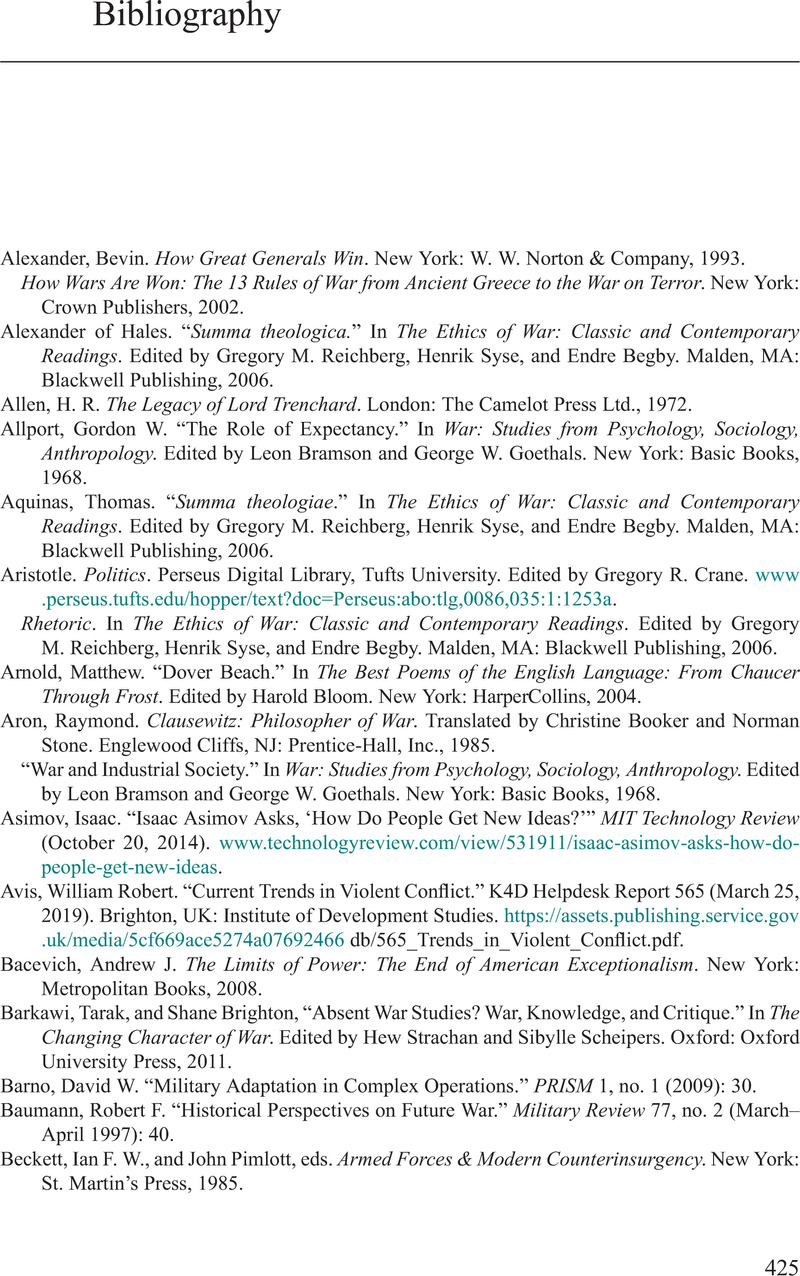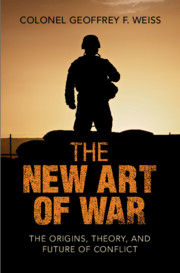Book contents
- The New Art of War
- The New Art of War
- Copyright page
- Dedication
- Contents
- Figures
- Preface
- Acknowledgments
- Introduction: Why Study War?
- 1 The Origins of War
- 2 The Masters of War Theory and Strategy
- 3 Small Wars and Domain Theory
- 4 The Unified War Theory
- 5 The Future of War
- Conclusion
- Appendix
- Notes
- Bibliography
- Index
- References
Bibliography
Published online by Cambridge University Press: 12 August 2021
- The New Art of War
- The New Art of War
- Copyright page
- Dedication
- Contents
- Figures
- Preface
- Acknowledgments
- Introduction: Why Study War?
- 1 The Origins of War
- 2 The Masters of War Theory and Strategy
- 3 Small Wars and Domain Theory
- 4 The Unified War Theory
- 5 The Future of War
- Conclusion
- Appendix
- Notes
- Bibliography
- Index
- References
Summary

- Type
- Chapter
- Information
- The New Art of WarThe Origins, Theory, and Future of Conflict, pp. 425 - 436Publisher: Cambridge University PressPrint publication year: 2021



